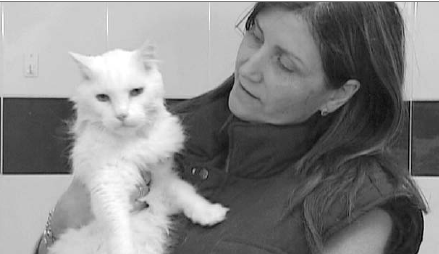If you have a cat at home, you have the obligation of providing it with everything it needs to develop good health and hygiene. Just 10 minutes a day is enough to keep your cat in good condition, as it is an easy and inexpensive pet to maintain. So, here are the essential tools:
1 – Litter tray: with a roof if desired, and with cat litter (clumping litter is more hygienic and comfortable to use). A deodorising agent can be added or deodorised cat litter is available. The litter tray should be plastic to facilitate cleaning.
2 – Scratching post: cats like to scratch; so providing them with a suitable scratching post will allow them to display this behaviour without having to resort to your sofa! The best type is made of rope. Additionally you should cut your cats claws from time to time with special clippers. Ask your vet to show you how.
3 – Food and water bowls: should be plastic or metal and separate (double feeders are not recommended due to difficult cleaning). Complete dry food is preferable (although canned cat food is more palatable) as cats eat several times a day.
4 – Bedding: to get your cat used to sleeping in your home, place soft bedding in an enclosed/igloo type basket which are available commercially. Cats also like to climb and hide inside things, so providing shelves, climbing frames and cardboard boxes keep your cat
entertained.
5 – Malt oil: is recommended to prevent formation of hairballs in the digestive tract. Cats are constantly grooming and simultaneously ingesting air. Cats love to eat grass, an action that makes it possible to eliminate the hairs ingested, however the weekly supply of malt oil makes this unnecessary.
6 – Brushes: should have soft plastic spikes and be used daily, thereby stimulating the renewal of dead hair and preventing the formation of uncomfortable knots.
7 – Toys: are very important to keep the cats senses in top condition (sight, hearing, smell and touch) and their nervous system requires continuous stimulation. Remember that cats have developed as effective nocturnal predators, and will naturally spend up to half of their time
engaged in hunting activity. If they are not hunting, this activity needs to be replaced by other forms of exercise and mental stimulation. The best way to use up your cat’s energy is to play with him. There are lots of cat toys available in pet shops or they can be made very cheaply from ping pong balls, string or old plastic bottles. The things that make toys interesting for cats are novelty and movement. A toy that doesn’t
move and which has been on the floor for a week will not entertain your cat! So change toys regularly and actively play with them to make them interesting. Hanging toys up so that they swing in the breeze or move with a door will also make them more interesting.
■ It is important to worm your cat every two or three months. Your cat should also receive two annual vaccinations which protect against calicivirus, rhinotracheitis, panleukopenia, chlamydia, and the feline leukaemia virus. Even if your cat does not go out on the street, owners constantly introduce viruses and bacteria into the home. Finally, your cat should also receive a monthly treatment of external parasites.
Cats can be bathed monthly with specifically designed shampoos. If you opt for premium or high end range of complete foods which provide all the nutrients required there is no need to add vitamins or medicines to the daily feed. However, long haired cats appreciate the occasional
addition of a few drops of oil rich in fatty acids, which will strengthen their skin and fur. Vets are noticing an increase in the number of cats with sand or stones in their urine, mainly due to poor nutrition.
Did you know…
Neutering has multiple benefits for both male and female cats. Males will be less inclined to fight, roam and spray, thus lessening the risk of catching diseases spread through bites. Females won’t have to endure the painful mating process, will be less likely to contract diseases that are spread through bites or reproductive activity and, of course, there will be fewer unwanted kittens. Unneutered female cats are at greater risk of developing mammary cancer.
This article was published in Costa Blanca News.


